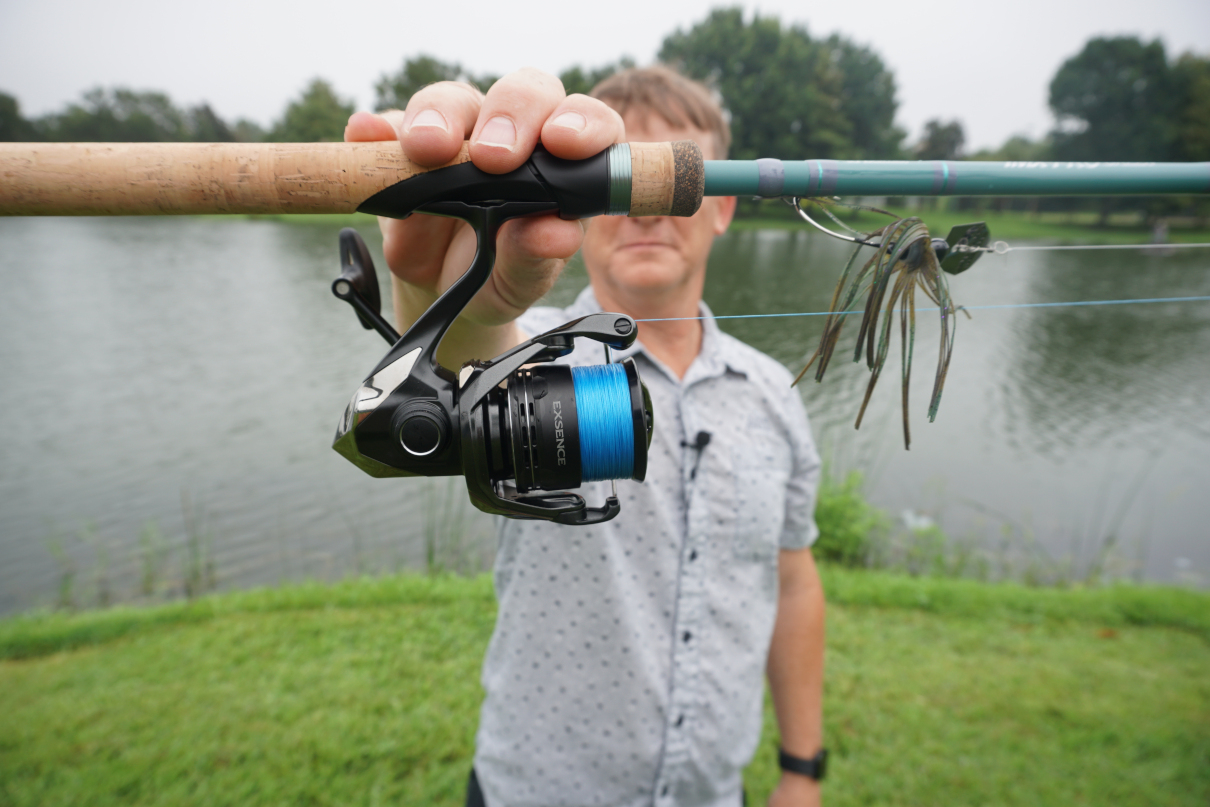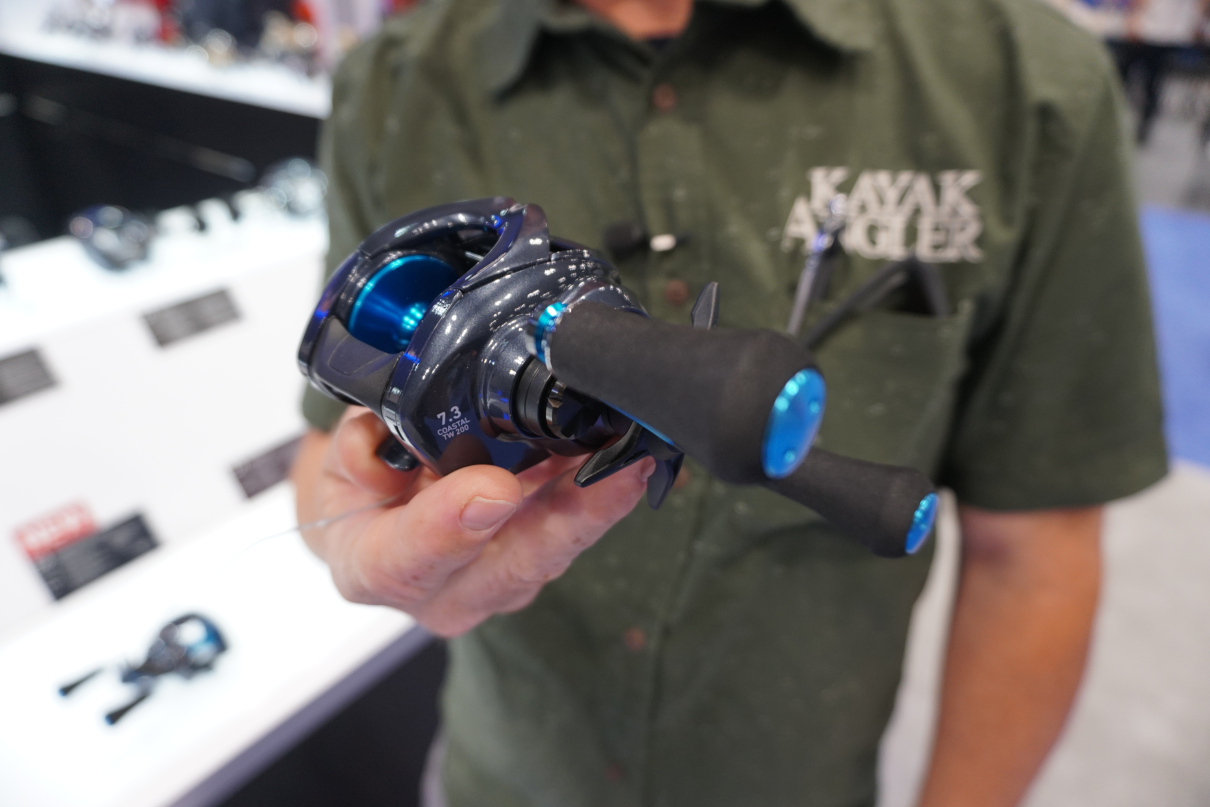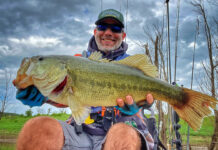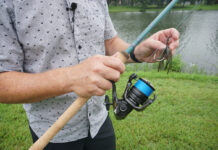There are as many types of fishing reels as there are types of fishing. Big, small, fast, slow, spinning, baitcasting, trolling and jigging—there’s a reel for every type of angler.
Before asking what type of fishing reel you should buy, first ask what type of fishing you plan to do. Are you trolling for king mackerel, working crankbaits for bass, sight casting to redfish, vertical jigging tuna, finessing a smallmouth or walking-the-dog for striped bass Highly specialized reels continue to develop for species and tactics. On the other hand, there are great do-it-all fishing reels if you have your sights set on a broader range of use.
Here is a general overview of the different types of fishing reels available to help you choose.
Types of Fishing Reels
Spinning Reels

One of the first decisions to make in fishing is choosing between a spinning or baitcasting reel. Spinning reels are most popular because they are easy to use. But these reels are also perfect for many types of fishing. A spinning reel hangs below the rod and uses a wire bail to wind line on the spool.
During the cast, line leaves the spool in large loops. The eyes on a spinning rod are larger to gather the line and send the lure maximum distance. A spinning reel doesn’t apply resistance to the line as it leaves the spool, so spinning reels are great for casting light lures or windy conditions.
Since the reel hangs below the rod, spinning reels are more sensitive allowing the angler to feel every vibration of the line. Spinning reels are also more powerful, because the line guides are under the rod for more lift. Most spinning reels have the handle on the left side for a right-handed caster. Lefties can unscrew the handle and switch it to the other side of the reel. There is no need to hold the spinning reel above the fishing rod.
Spinning reels don’t hold as much line as a trolling reel, and they don’t cast as far or accurately as a baitcasting reel.
Who should choose a spinning reel
For a beginner or an accomplished angler, spinning reels are easy to use and offer many advantages. To target a wide variety of fish from largemouth bass to redfish and striped bass, anglers choose a seven-foot, medium-action spinning rod matched to a 2500 size spinning reel. Spool the reel with 10-pound test mono or 20-pound braided line and add a short leader of 15-pound test fluorocarbon. This set-up will fish everything from topwater lures to bottom baits with a specialty in finesse lures and weightless soft plastics.
See our Best Spinning Reels buyer’s guide
Baitcasting Reels

Baitcasting reels are a popular choice for inshore and light-tackle anglers expecting to make a lot of casts. A baitcaster sits on top of the fishing rod and winds line directly onto the spool. Since the reel can be operated with one hand, it is more efficient for repeated casting.
Baitcasting reels also offer more control of the line. When making a cast, the angler can lightly thumb the spool to stop the lure on the spot. Then, when a fish bites, clamp down on the spool with your thumb for a strong hookset.
On a baitcasting reel, line leaves the spool directly so the rod guides are smaller. Baitcasting reels allow line to travel faster for a longer and more accurate cast. A reel with an open spool will cast farthest. Reels with a line guide make it easier to work a lure.
For fishing crankbaits, wake baits, swim shad, buzz baits and other fast, steady-retrieve lures, a baitcaster makes it easier to fish all day. Anglers like a baitcasting reel for topwater lures and frogs because they can apply immediate pressure when a fish explodes on the lure. With a lower center of gravity and one-handed operation, baitcasting reels are more comfortable for making cast after cast and working heavy lures.
When it comes to saltwater reels, anglers prefer baitcasting reels to cast a heavy lure a long distance with pinpoint accuracy. Baitcasting reels also retrieve the line faster to work the lure at top speed.
Who should choose a baitcasting reel
At first, anglers are intimidated by a baitcasting reel. If you don’t cast properly, the line will explode into a huge tangle called a backlash. Even the pros get a backlash now and then. It takes some practice, patience and some tuning of the reel settings, but for those seeking performance, the baitcasting reel will cast quicker and farther with more accuracy.
See our Best Baitcasters buyer’s guide
Trolling Reels

Trolling reels are a heavier version of a baitcasting reel with greater line capacity and higher drag pressure. Trolling reels use either a star drag or lever drag. A star drag can be set at a specific drag pressure for the duration of the fight. For larger fish, a lever drag can be adjusted through a range of preset settings to adjust the pressure during the fight. Big game anglers also favor a two-speed reel, which can be switched from a high speed retrieve for bringing in the line and a low-speed for more power fighting a fish.
In addition to trolling, these heavy reels can be used for bait fishing and vertical jigging. A six to seven-foot, medium heavy rod matched to a 20- to 30-pound reel spooled with 50 pound braided line and a topshot of 100 yards of 20 to 30 pound monofilament is a good trolling or bait-fishing outfit. Remove the topshot of monofilament for vertical jigging.
Who should choose a trolling reel
If you plan to use trolling techniques or target big game fish—where a high line capacity is preferred for working various depths and specific drag capabilities aid in the fight—then look toward trolling reels.
Spincast Reels

A spincast reel is easiest to use. The reel sits on top the rod and the spool is encased in a metal housing. Just push a button, swing the rod, and the reel takes care of casting.
Who should choose a spincasting reel
Spincast reels are great for kids or new anglers, but they rob you of casting distance and accuracy. These reels don’t have drag adjustment, so they are best for small fish. The reels are most often sold with a matching fishing rod for a perfect beginner’s combo.
Fly Fishing Reels

Fly fishing uses a heavy line to cast a light lure. Anglers work the lure and make the cast by stripping the line. A fly fishing reel is mostly used for holding line between casts and fighting the fish. For this reason, fly fishing reels have a large arbor to hold heavy fly line. Peel line off the reel to cast then use the handle to crank in line when a fish is on.
Who should choose a fly fishing reel
Fly reels are built for the purpose of holding heavy line to lay out lightweight flies. it is a different form of angling compared to slinging lures with a baitcasting or spinning reel. If presenting flies is the game you want to be in then a fly reel is what you need.
Fishing Reel Brands
As fishing reel brands compete to win new customers they are designing better reels at a lower price. Innovation and advancements once only available on expensive reels are now found on lower-priced models.
In a kayak, reels are exposed to water, dirt, salt and grease without protection. A good reel for kayak fishing will feature the best quality components and toughest construction. The following fishing reel brands produce great reels at a price for anyone.
Feature Image: Joe Potoczak







